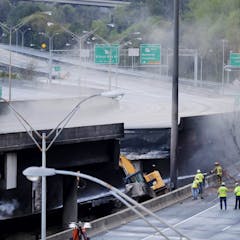
Articles on Broadband
Displaying 1 - 20 of 104 articles

Affordable access to high-speed internet brings educational opportunities, economic development and better access to health professionals.

New research reveals the digital divide that was exposed by the COVID pandemic.

Every state is poised to receive a large amount of federal money to expand broadband access, but they have a lot of work to do to meet the government’s requirements for distributing it.

Ensuring that billions of dollars of federal funding for broadband service are well spent – and that consumers get what they pay for – comes down to knowing the actual speeds internet users experience.

Claims the digital divide has been ‘closed’ don’t include the full picture of internet inequality in the United States.

States have widely different track records on expanding broadband internet access. Here are the ones that could struggle to handle the federal funds coming their way.

Smart cities’ focus on technology has made the digital divide worse, not better. The new infrastructure law could change that.

The Infrastructure Investment and Jobs Act designates broadband internet access as an essential service and targets billions of dollars to close the digital divide.

As President Biden signs the bipartisan infrastructure bill, it’s important to determine which road, freight and information networks are the most vital to protect.

Pressure is mounting on Congress to take action on Facebook. Our panel of experts offers their top priorities: user control of data, banking-like oversight and resources to close the digital divide.

You can measure the speed of your broadband connection, but that’s not the whole story. Your network provider also has to manage factors such as data loss and latency to ensure a smooth connection.

Comprehensive early childhood education, mental health support, internet connectivity and post-secondary funding are part of reducing the consequences of poverty so all students may excel.

A new federal antipoverty program for both rural and urban areas is part of the solution, but the power of Big Ag, lack of internet and struggling towns need attention, too.

The vaccines’ cold storage requirements and shipment rules put small, rural communities at a disadvantage, but that’s only part of a long-running challenge.

The pandemic will have a long-term impact on life in the countryside.

The need for much-improved internet connectivity exists across Canada. Will the Ontario government’s recent announcement of $1 billion and the federal government’s announcement of the Universal Broadband Fund of $1.75 billion for improved broadband be enough to make a difference?

South Africa has come short of its digital ambitions, but it can catch up by ensuring access to high speed broadband, and support for domestic digital firms and entrepreneurs.

Millions of households are expected to gain access to upgraded internet connections, with speeds of up to one gigabit per second (if you’re willing to pay for the plan).

Americans depend more than ever on high-speed internet to connect to jobs, get health care and socialize. What policies really work to close the rural-urban digital divide?

Frustrated by the inability to get good internet, a rural village decided to dig a superfast connection in themselves.
